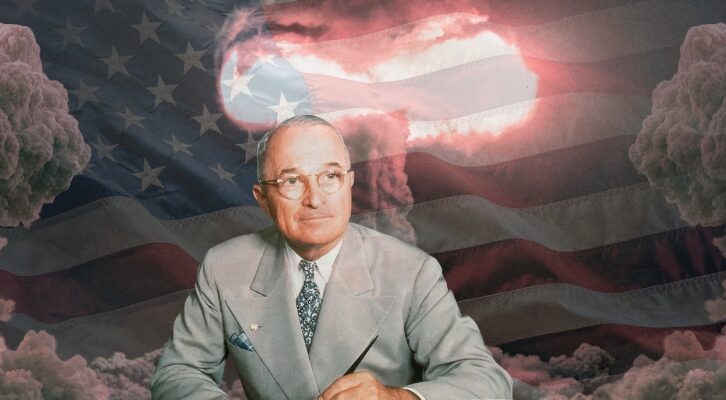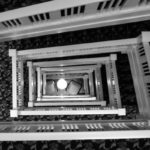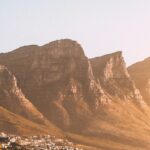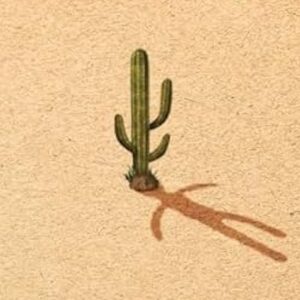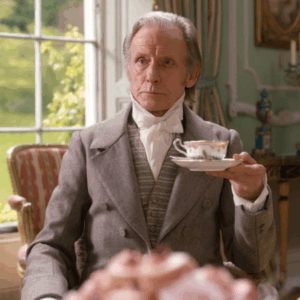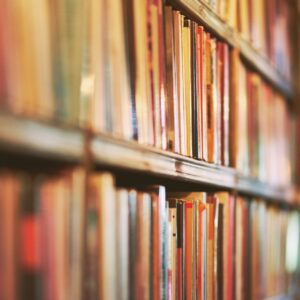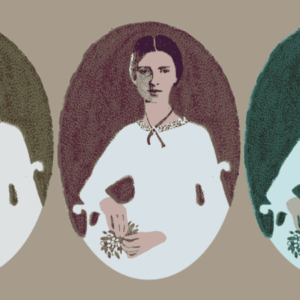
On the Future of the American Essay
How Film and Poetry are Changing the Form—And Vice Versa
Among the notable features in The Making of the American Essay, the third and concluding volume of editor John D’Agata’s trio of anthologies exploring the ways that the essay form has been shaped over the years, is the inclusion of a number of works that aren’t technically essays. There are plenty of nonfictional touchstones in the book, including works by the likes of Gay Talese, Kathy Acker, and James Baldwin, but the borders established by D’Agata are porous: certain pieces line up with the chronology around which the book is organized, but not all of them do. And there’s a strong sense of the multidisciplinary. Within this sizable tome, one will also find an excerpt from Herman Melville’s Moby-Dick; William Gass’s short story “In the Heart of the Heart of the Country;” and Kenneth Goldsmith’s poem “All the Numbers in Numbers.” D’Agata intersperses introductory texts before each piece, which give a sense of what was happening in American society and culture at around the time that a given piece was written. Or, in certain cases, for the year to which a given piece written much later corresponds.
Halfway through the book, D’Agata invokes the photography of Ansel Adams, and writes something that serves as a touchstone for much of what has already come and is yet to follow. He describes Adams as trying to figure out “how to make photography work, how to render with light and luck the deep and powerful truths that he feels when in the mountains.” D’Agata then quotes comments made by Adams closer to the time of his death, when he spoke of his desire to express “something that is built up from within, rather than something extracted from without.” Given that this is found in a book titled The Making of the American Essay, rather than The Making of the American Photograph, one can assume that D’Agata intended for this notion to have a cross-disciplinary application.
The idea of an essay as something built up from within serves as as good a place as any in terms of demarcating where a personal essay ends and memoir begins. Think of works such as Thomas Lynch’s The Undertaking: Life Studies From the Dismal Trade, which could just as easily turn up in a list of acclaimed memoirs as it might in a consideration of notable essay collections. As D’Agata’s recent anthology shows, the lines between essays and other literary forms are often blurred. Wendy S. Walters’s collection Multiply/Divide opens with a prefatory note explaining which literary category each of its pieces falls into. Calling it an essay collection wouldn’t be entirely accurate, but neither would it be incorrect.
The essay is increasingly expanding its reach, both stylistically and in terms of the number of mediums in which works that can be considered essays exist. In The Making of the American Essay, more experimental forms are used to demonstrate the techniques available to essay writers. John Cage’s “Lecture on Nothing” is presented with a style of spacing that may be confusing to readers at first. Gradually, however, the way that those spaces work with the rhythms of the text of Cage’s lecture begins to cohere, as does its relationship to silence. (D’Agata’s note introducing it references Cage’s 4’ 33”.) Absence as a device can be used powerfully in the essay. Jenny Bouilly’s 2002 The Body: An Essay takes an even bolder structural decision: it is organized as a grouping of footnotes annotating an otherwise unseen text. Some of the footnotes in turn contain their own footnotes, or lists, or extended quotations, and the result is a head-twistingly bravura feat in which literary form and narrative decisions embrace the unexpected.
How that translates to the experience of editors and readers is in a state of flux. Kristen Radtke is the Managing Editor of Sarabande Books, who have released some of the most interesting essay collections in recent years, including Walters’s aforementioned Multiply/Divide, Elena Passarello’s Let Me Clear My Throat, and Angela Pelster’s Limber. “As an editor, I’ve been seeing a broader range in the kinds of essays I’m sent—in form, content, and the writers who are crafting them,” she told me. “The work is there, I think, but our capacity to talk about it might not be.” She noted that Maggie Nelson, Leslie Jamison, and John Jeremiah Sullivan, Jr. are often cited as reference points by agents pitching manuscripts to her. “I love those essayists,” she said, “but the frequency with which a few names are cited shows there’s room to expand our canon. That’s always going to start with reading widely.”
For Radtke, the influence of certain essayists on the form has been substantial. “I don’t think we’ve seen a contribution to the form as expansive and considered as John D’Agata’s anthologies. His introductions to each essay are essays in themselves,” she said, and also cited David Shields’s Reality Hunger as significant for “the conversation it started about nonfiction and the essay.” Besides her editorial work with Sarabande, Radtke also creates comics—Imagine Wanting Only This, a work of graphic nonfiction, will be released in April of 2017 by Pantheon. “An essay or an essayistic mode can be employed in any genre,” she said. “I think the comics form is overrun with possibility.”
* * * *
Another form that has long ventured into the essayistic is film. The concept of the “cinematic essay,” much like its literary counterpart, has an “I know it when I see it” component differentiating it from a more traditional documentary. In a 2013 piece for The AV Club, Nathan Rabin praised Orson Welles’s 1975 film F For Fake, which could certainly be categorized on the essay side of the aisle. “Welles’ reality-warping cinematic essay uses the story of a series of famous frauds and hoaxes to explore the slippery line separating reality and deception,” wrote Rabin. Structurally, F For Fake is an odd film to watch: it contains numerous scenes of Welles wandering around Europe, discussing questions of forgery and holding forth on aesthetics, all while wearing a pretty excellent cape. It is also a film that makes abundant use of Welles’s skills as an oral storyteller, including a lengthy section that draws in Pablo Picasso and has a fantastic structural payoff. Perhaps it’s in this scene that the mark of this film’s essayistic qualities resonates: although F for Fake is quintessentially cinematic–this is an Orson Welles film, after all–it also incorporates aspects of and references to other artistic disciplines. It isn’t difficult to imagine some alternate history in which a book version of F For Fake left a huge impact on the literary world, and stood along with the essays of Susan Sontag (who also directed several films) as major touchstones for the form.
In addition to her work at Sarabande, Radtke is also the Film Editor for the long-running journal Triquarterly. The video essays in their latest issue encompass a variety of styles, from “Dimensions,” a concise portrait of artist Gray Foy, to José Orduña’s “This Is Not My Home,” which opts for a much more impressionistic approach. In Orduña’s film, an onrush of images of houses inside and out are juxtaposed with the narration, which acts a kind of negation of or counterpoint to the visuals. That declarative style evokes Joe Brainard’s I Remember, which turns up towards the end of The Making of the American Essay. Orduña’s film feels like a poem turned into sounds and images—but it also seems uniquely essayistic, and uniquely cinematic.
“There are certainly films branded as documentaries that are essays (Chris Marker’s Sans Soleil being probably the most famous example),” Radtke told me. “For me, the definition of an essay is very clear—it’s working to drive something out. Its concerns aren’t stagnant or pre-ordained or prescribed. It evolves.”
In a 2013 roundtable discussion of Thom Andersen’s 2003 documentary Los Angeles Plays Itself at The Dissolve, Scott Tobias noted that a certain type of video essay has grown in popularity in recent years. He pointed out that critics now have the ability “to assemble clips and voiceover with the ease of putting pen to paper,” and held up Los Angeles Plays Itself as a particular high point of that form. But throughout the conversation, which also included Keith Phipps, Nathan Rabin, and Tasha Robinson, there was some debate over just what kind of cinematic essay this film is. Robinson’s take on the film works both as a summary of its stylistic range and as a testament to the strength of the essay in whatever medium it happens to exist:
Los Angeles Plays Itself in many ways comes across as a scholarly essay, dissecting the presentation of a city, then narrowing the focus to broad geographical features, specific buildings, and ultimately specific professions within it. It’s thoughtful and analytical… except when it’s subjective and personal.
“Thoughtful and analytical… except when it’s subjective and personal” can also serve as a solid aesthetic definition for many an essay. It’s certainly a way in which the dozens of works collected in D’Agata’s latest anthology could find some common ground. The Making of the American Essay demonstrates one argument about the influence that other literary forms have had on the essay. Another can be found in a recent piece by Jonathon Sturgeon for Flavorwire, in which he examines the ways in which poetry has expanded the range of contemporary nonfiction, with a particular focus on Brian Blanchfield’s recent essay collection Proxies. Near the end of his piece, Sturgeon points to one of the effects of poetry’s influence: “The reanimation of old forms.” A reader of D’Agata’s latest anthology will find plenty of echoes here.
The influence of poetry on essays doesn’t only proceed in one direction. Poet Brandon Lewis is presently at work on a series of poems inspired by the essays of Michel de Montaigne. For him, the process began by reading through Montaigne’s collected essays. “I was a little mystified by his titles and the interplay between his own life, history, and the quotes from the ancients that he dredges up so regularly,” Lewis said. “105 titles? From ‘On the Cannibals’ to ‘On Pretending to be Ill’ to ‘On Thumbs’–that felt like a challenge for poeming.”
Lewis’s process generally begins with “whatever the title triggers,” he told me. That can lead to a vast array of historical references and imagery. For example, his poem “On Solitude” juxtaposes a very contemporary urban scene with language that evokes a much more classical literary tradition. When I asked Lewis about the way that he arrived at some of the poems, he listed a host of images and references:
For “That the soul discharges its emotions against false objects when lacking real ones,” I began with augury, Houdini and the doomsday pamphleteers lining the subway and that let me to the woods. For “On War-horses,” its my family and my relationship to [the] European invasion of the Americas.
“[W]hat’s been exciting for me is feeling something at stake in each poem,” he said. “I’ve told myself to confess something, to give something away for each poem in the project. It’s a good feeling.” Lewis’s project, then, could be called an essayistic take on poetry that’s inspired by essays. It’s bringing the form back around to where it started, taking something from the well, and moving on. It’s another demonstration of both the lasting influence of the essay, and of the ways in its form can gradually impact other disciplines and mediums, creating richer perspectives through which we readers and viewers can consider the world.
Tobias Carroll
Tobias Carroll is a writer and essayist, and the managing editor of Vol. 1 Brooklyn. He is the author of three books: Political Sign (Bloomsbury), part of the Object Lessons series; the story collection Transitory (Civil Coping Mechanisms) and the novel Reel (Rare Bird).











